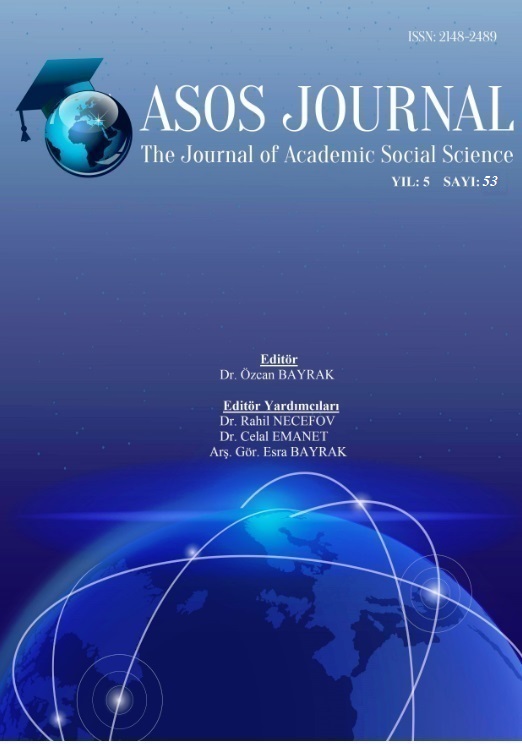KENT İÇİ ULAŞIMINDA GELENEKSEL TOPLU TAŞIMA SİSTEMLERİNE ALTERNATİF ÇÖZÜMLER: ANKARA İLİ “YENİMAHALLE-ŞENTEPE TELEFERİK HATTI” ÖRNEĞİ
Author :
Abstract
Bu çalışmada, ulaşım sorunlarına çözüm üretmek adına kent içi toplu taşıma sistemlerine bir alternatif sunulmaktadır. Kentsel alanlarda doğal eşikler, farklı ulaşım türleri arayışına neden olmuştur. Dağlar, vadiler ve büyük su kütleleri gibi coğrafi ve topoğrafik engelleri geleneksel ulaşım türleri ile aşmak maliyet gerektirdiğinden, kent için toplu taşıma sistemlerine alternatif üretilmesi zorunlu hale gelmiştir. Böylelikle, zaman içinde toplu taşıma sistemlerinde dikkat çekici düzeyde niteliksel ve niceliksel gelişme kaydedilmiştir. Teleferik sistemleri, uzun yıllardır dağlık alanlarda kayakçı ve turistleri taşıma amaçlı olarak kullanılmaktadır. Bir zamanlar kentsel ulaşımda bir olasılık olarak kabul edilen kablolu hava ulaşımı dünya çapında ilgi görmüş ve artık dünyanın arazi kısıtlı çeşitli kentsel alanlarında toplu taşıma çeşidi olarak tercih edilmeye başlanmıştır. Çalışma kapsamında bu alternatif dünya ve Türkiye örnekleri üzerinden tartışılmıştır. Çalışmada 2014 yılında faaliyete geçirilen Ankara Yenimahalle-Şentepe Teleferik Hattı Projesinin bölge üzerine etkisi, eksik yönleri ve avantajları ile dezavantajları, diğer toplu taşıma sistemleriyle birlikte değerlendirilmiştir. Yenimahalle-Şentepe Teleferik Hattı Projesi’ndeki zayıf yönlerin neden olabileceği olumsuzluklara karşı üretilecek çözüm önerileri tehditleri fırsatlara dönüştürebilecektir. Bu sorun ve darboğazlar belirlenirken güçlü yön-zayıf yön-fırsat-tehdit (GZFT) analiziyle değerlendirme yapılmıştır. GZFT analizinde, güçlü yönlerin ve fırsatların potansiyelini en etkin şekilde kullanılarak, zayıf yönleri güçlendirecek ve tehditleri ortadan kaldıracak politikalar üretilmelidir.
Keywords
Abstract
In this study, an alternative to urban public transportation systems is presented in order to deal with the transportation issues. Natural thresholds in urban areas have led to the search for different modes of transport. Since geographical and topographical obstacles such as mountains, valleys and massive water bodies are costly to overcome with traditional modes of transportation, it has become compulsory to produce an alternative to public transport systems for the city. Thus, qualitative and quantitative progress has been made through time at a remarkable level in public transport systems. Ski lifts have been used in mountainous areas for many years to transport skiers and tourists. Wired air transport, once considered a possibility in urban transport, has attracted worldwide attention and is now being preferred as a public transport variety in various urban areas of the world's limited land. Within the scope of this study, this alternative has been discussed through examples from world and Turkey. The impact, incomplete aspects, advantages and disadvantages of the Ankara Yenimahalle-Şentepe Cableway Line Project, which had been operational since 2014, were evaluated together with other public transportation systems in the study. Solutions to problems caused by weaknesses in Yenimahalle-Şentepe Cableway Line Project could turn the proposed threats into opportunities. Assessment by a strong direction-weak-direction-opportunity-threat (SWOT) analysis was made while these problems and bottlenecks were being determined. In SWOT analysis, policies should be developed that will strengthen weaknesses and eliminate threats by using the potential of strengths and opportunities effectively.
